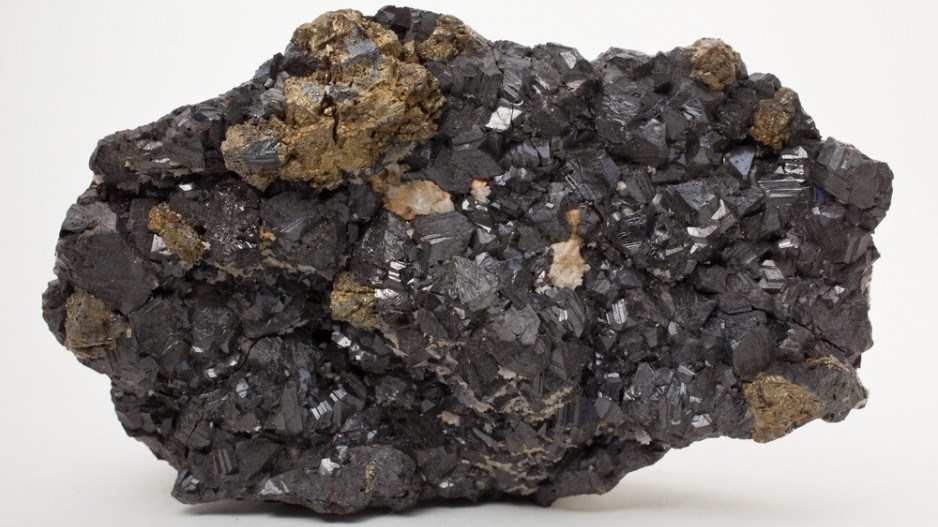The outlook for commodity prices for British Columbia companies in 2015 is a mixed bag that includes flat prices for three key commodities – gold, copper and metallurgical coal –but good prospects for wood products and zinc, and a modest rebound in oil prices by mid-year, according to Scotiabank.
The year just ending has not been a good one for global commodity prices, due in part to slower growth in China, expanding capacity by producers in some sectors and a battle to preserve market share amid tumbling prices for commodities like oil.
B.C.’s mining and exploration sector has been particularly hard-hit. A met coal glut shuttered mines in Tumbler Ridge and Chetwynd earlier this year, and a similar glut of molybdenum has led Thompson Creek Metals Company Inc. (TSX:TCM) to announce it will shut down its Endako mine in Fraser Lake.
B.C.’s mining sector is dominated by three main commodities: metallurgical coal, gold and copper. Copper prices have remained relatively stable for the past three years, but Mohr expects they will dip slightly in 2015 to an average price of about $3 per pound.
“It’s still at profitable levels, but there’s still new supplies coming on stream around the world in copper,” she said.
As for gold, a strengthening American economy and U.S. dollar means gold prices are likely to continue to be flat or even continue inching down in 2015, Mohr said.
Meanwhile, a global glut of metallurgical coal – B.C.’s second largest export – has brought prices down from US$300 per tonne in 2011 to US$117 per tonne. Prices are not expected to recover for at least 12 months, according to coal industry experts.
The coming year should see a couple of bright spots for B.C.’s resource-based economy, however. One is zinc. Zinc prices are rising and are expected to continue to rise – not because of increasing demand, but dwindling supply.
Zinc mines in Canada, Australia and Ireland have become depleted, leading to mine closures or imminent closures. Mohr expects zinc prices will continue to rise through 2015 and 2016, which she expects will attract investors.
“Probably the market for zinc concentrate is going to shift into a deficit situation by 2016,” Mohr said. “Commodity funds and institutional investors have noticed this and they’ve started to take positions in zinc.”
That’s good news for B.C.’s biggest mining company – Teck Resources Ltd. (TSX:TCK.B), which operates a zinc smelter in Trail, B.C. and just recently restarted its Pend Oreille zinc mine in Washington State.
Another commodity that Mohr is bullish on is oriented strand board (OSB), which is good news for B.C. producers like Tolko and Ainsworth Lumber Co. The latter company recently announced it s merging with Norbord Inc. (TSX: NBD).
“As the recovery in U.S. housing activity continues to unfold and rise, we expect that the OSB demand is going to rise substantially,” Mohr said. “With that, I think prices will climb. They will strengthen quite markedly particularly by the middle of 2015 and in 2016.”
As for other B.C. forest products, a seasonal falloff will bring the average price for western spruce-pine-fir 2X4s down to US$339 per thousand board feet (mfbm). An improving U.S. housing market is expected to move the average price to US$370 mfbm in 2015 and US$390 to US$400 mfbm in 2016.
“The improvement in lumber is not over,” Mohr said.
Pulp prices, meanwhile, have continued to improve steadily since 2009 – when prices per tonne dropped to $720 – ending 2014 at US$1,025 per tonne. Scotiabank predicts they will drop slightly to US$1,005 per tonne in 2015 and pick up again in 2016 to $1,020 per tonne.
Although B.C. is not an oil producer, it is affected indirectly by oil prices, which have plummeted 40% in the last four months.
At US$56 per barrel, the West Texas Intermediate oil prices mean many producers are operating at a loss or break-even, Mohr said. Western Canadian Select heavy oil from Alberta’s oil sands is even lower, at $US46.29 per barrel.
“The price can’t stay that low for very long because we will see a sharp drop in drilling activity,” Mohr said.
American and Canadian oil producers are already cutting back on drilling, and production in Russia, Iraq, Iran and Africa is also expected to be cut back.
Mohr expects prices will correct by mid-2015, but even then, she predicts several years of oil at below US$80 per barrel. She expects WTI oil prices to climb about 25% to US$70 per barrel by late 2015.




